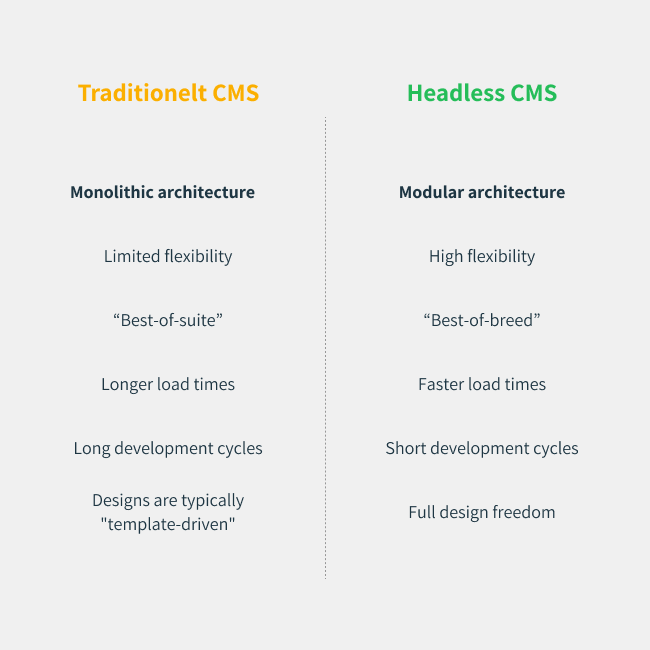
What is a headless CMS?
A headless CMS is characterized by the separation of your content (body) from the system where it is presented (head). This setup forms the basis for developing one or more lightning-fast websites or applications, all using data from your preferred CMS.
With a headless CMS (for example, from Umbraco), you gain the ability to focus on strengthening processes around creation, updating, collaboration, versioning (e.g., languages), and backups of your content.
Typically, the CMS also acts as the engine that generates the visual user interface that the user encounters. But with a headless CMS, you are free to develop multiple different applications that use the data contained in the CMS in unique, platform-tailored applications and sites.
The purpose of a headless CMS is therefore to provide you with a single place to manage your content, decoupled from the channels where the content is presented to the user, whether that’s on a webshop or in an app.

Headless CMS versus traditional CMS - what’s the difference?
A headless CMS is typically part of a microservices architecture, where each component performs clearly defined tasks (e.g., order management, login, checkout, and similar).
Thus, Microservices and Headless CMS represent a break from the traditional CMS “monolith mindset,” where all functions are bundled into a single system.
If you use a traditional CMS, you’re typically limited to working within the framework set by the CMS. With a headless CMS, you have the ability to separate data from design, giving you much greater flexibility.
Additionally, traditional CMS platforms usually only allow a website or webshop as the sole output for your content, which poses a technical limitation.

Advantages of a headless CMS
There are many advantages to using a Headless CMS. Efficient content management, scalability, faster time-to-market, and much more. However, we see our clients respond especially strongly to two benefits:
Flexibility:
With a headless CMS, you can more quickly change or add new presentation layers if you wish. When your backend and frontend are separated, APIs ensure mutual independence, allowing individual components to be removed without affecting the ENTIRE platform. This gives you the ability to leverage new technologies without having to replace your entire platform.
Performance:
Large solutions experience better performance with a Headless CMS than with traditional monoliths. A cloud-hosted headless CMS solution is often lightning fast, so your users don’t have to wait for your content.
Headless CMS with Umbraco
As an Umbraco Partner, we can build your next headless CMS on one of the market’s most popular open source platforms.
Umbraco’s CMS has been on the market for more than 15 years and is used on over 700,000 websites worldwide. Umbraco itself describes their platform as structured, logical, and scalable, which we at PicoPublish fully support.
With a headless CMS built on the Umbraco core, you get a streamlined and efficient back-end tool for managing your content. We then assist you in building the right frontends for your primary channels.
Let's talk about you
You are experts in your business, and we are specialists in digital transformation and business optimization. Together, we can figure out what will create the greatest value for you.
Every day, we help our clients create engaging solutions, structure complex data, and optimize workflows.
We want to help you too!
